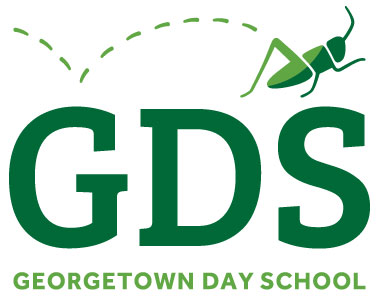Every year, GDS hosts two social justice teach-in days—one at the High School and another at the Middle School—focused on providing substantive opportunities for students to learn about the legacy and impact of Dr. Martin Luther King, Jr. through thought-provoking discussions, presentations, and informative workshops led by GDS faculty, staff, alumni, parents, and students. The diverse workshops focus on the efforts of individuals, local organizations, service-learning opportunities, and group activities. They may span across issues relating to social justice, including the Big 8 identifiers (race, ethnicity, gender, sexual identity, class, religion, ability – physical and mental, and age). Our goal is for students to not only understand the historical relevance and impact of Dr. King’s work, but to also remember that even now, our awareness and actions are equally important.
We asked LMS visual arts instructor John Headley to paint the image that would be used to promote the event. This is his explanation of how the painting came about.
When I was approached to create the design for this year’s Martin Luther King, Jr. Social Justice Teach-In Days poster, I was honored. I did not receive too much in the way of parameters about the project, and that afforded me the freedom to think creatively.
Martin Luther King, Jr. is one of the most iconic figures in modern history, and his likeness has been replicated and interpreted thousands of times. I was not particularly interested in creating a ubiquitous portrait of him, so I turned to his words for inspiration.
Among Dr. King’s many profound quotes includes: “Love is the only force capable of transforming an enemy into a friend.” This sentence struck a chord with me, and I began to think about the simplest way to convey the tension that exists between enemies and the connection that is achieved between people when love is present. I also reflected on the current climate of visible division amongst people from different backgrounds and ideologies, and about how solidarity amongst them can be achieved through shared grievances and need for change.
With these two concepts in mind, I thought that hands were the most expressive way to convey human emotion. A clenched fist cannot only be interpreted as a threat from another to do bodily harm, but also as a symbol of defiance and solidarity. Depending on the direction as well as how severely the digits are closed, the fist’s power is undeniable. The interlocked hands were based on a photo I had seen. I liked the unusual way hands interconnect creating a circle. They almost seem to meld into each other, becoming one, which is how love is. It becomes undefined when it is unconditional. When choosing my colors, I had two thoughts. First, I wanted them to be visually accessible to a young audience. Second, I wanted the message to be that we are all human, with differences in color, without having to represent degrees of light or dark skin tones.
I enjoyed creating the work for GDS. It is my hope that I will be asked to do it again next year.


